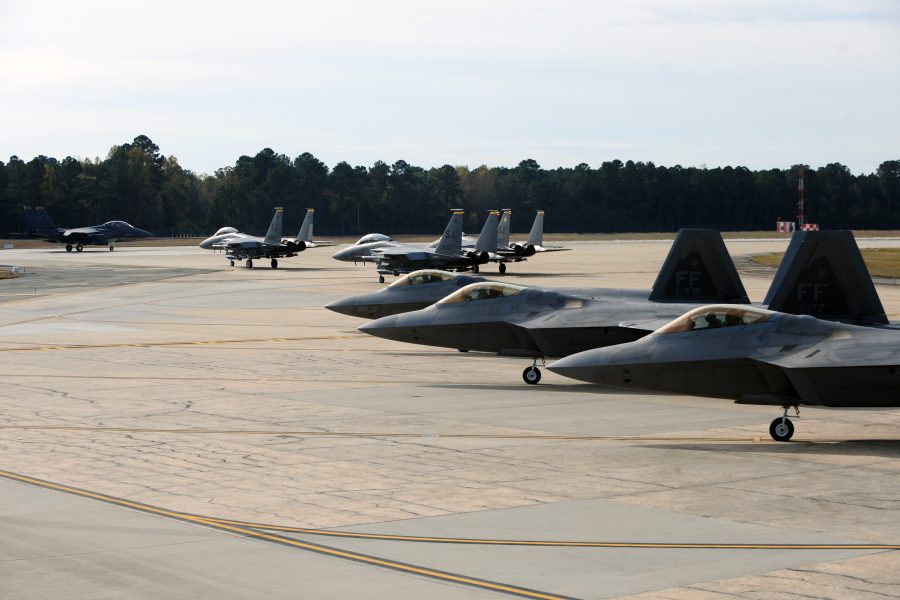The compromise 2024 National Defense Authorization Act, unveiled Dec. 7, pumps the brakes on the Air Force’s plans to retire dozens of F-15E, F-16, and F-22 fighters. The measure is expected to win approval from both chambers and signed into law by President Joe Biden within weeks.
Congress will limit to 68 the number of F-15E Strike Eagles USAF may retire from now through fiscal 2029—well short of the 119 aircraft the Air Force had hoped to send to the boneyard. The limit is a compromise. The Senate version of the bill would have blocked all Strike Eagle retirements through fiscal 2029.
The conference report, which includes more than 7,000 sections, requires the Air Force to report on the total cost of all modifications for invested in each F-15E and F-16C/D it plans to retire, along with the estimated remaining service life for each.
“The conferees applaud the Air Force’s effort to field F-15EX across the Active duty, Reserve, and Air National Guard components equitably, but remain concerned that tactical fighter capacity is not sufficient to meet combatant commander warfighting requirements at an acceptable level of risk,” the report states.
The conferees want similar concessions on other fighters, and want the Air Force to first set out a 12-year plan by April 1, 2024, defining “the rationale for any plans to activate, divest, deactivate, or change the mission of any unit” and “any plans of the Secretary to augment or supplant existing piloted tactical fighter aircraft capability or capacity with Collaborative Combat Aircraft.”
Congress’ intent appears to be to bar any planned F-16 retirements until fiscal 2025, giving lawmakers a second chance to block such moves if they don’t like the answers the Air Force provides in the spring.
Similarly, the compromise keeps in place existing law that bars the Air Force from retiring any F-22 Raptors. Service officials say their 32 Block 20 F-22s are among the most expensive planes to keep in the inventory, are too expensive to upgrade, and will never be used in combat. They have twice tried to retire the older F-22s. But lawmakers, backed by analysts, say giving up those airplanes will move combat-coded F-22s into training roles, effectively shortening the lifespans of those remaining F-22s and making fewer fifth-generation aircraft available for combat.
The larger portion of the fifth-gen fleet are F-35s, and Congress followed recommendations from the General Accountability Office and the F-35 Joint Program Offic to address concerns.
Under the pending NDAA, Congress followed GAO guidance, seeking to require the Pentagon to re-designate as “major acquisition subprograms” the Tech Refresh 3 and Block 4 upgrades—called continuous capability development and delivery—and the propulsion and thermal management modernization program. That would force the Pentagon to more clearly spell out the costs and status of each, both of which are valued in the billions of dollars.
The bill also requires the Air Force and Navy to develop “validated propulsion, power and cooling, thermal management, and electrical power requirements for the planned service life of the F-35,” and for the Joint Program Office to designate two new aircraft each of the F-35A, B, and C variants to serve as developmental testing and evaluation aircraft. JPO director Lt. Gen. Michael Schmidt has indicated the program needs more test aircraft.
While lawmakers opposed the Air Force on most fighters, they cleared the way for more A-10 Warthogs to be retired, appearing to end years of resistance to their demise.
Among other aircraft, the bill would:
- Block retirement of any RQ-4 Global Hawk drones
- Block further reductions in the KC-135 tanker fleet
- And hold at 16 the minimum number of available E-3 AWACS.
